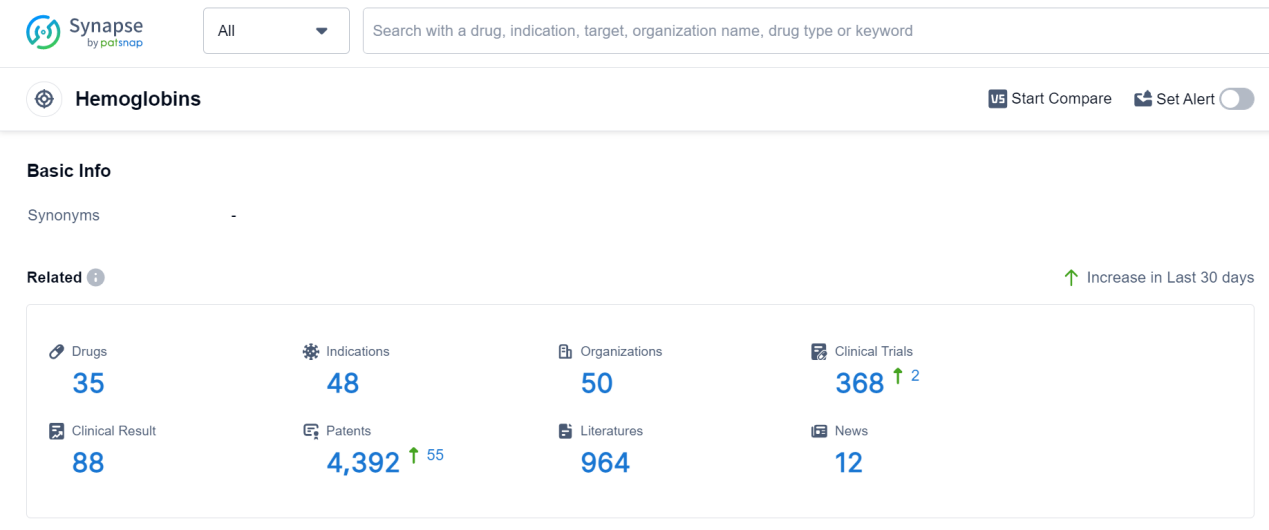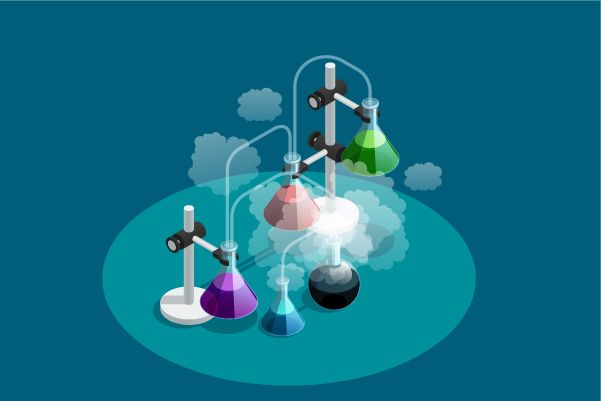An In-depth Analysis of Methylene blue's R&D Progress
Methylene blue's R&D Progress
Methylene blue is a small molecule drug that primarily targets hemoglobins. It has been approved for use in various therapeutic areas, including nervous system diseases, infectious diseases, hemic and lymphatic diseases, and other diseases. The drug is indicated for the treatment of bacterial infections, as well as for diagnostic purposes, methemoglobinemia, poisoning, and Alzheimer's disease.
The originator organization of methylene blue is TauRx Therapeutics Ltd. The drug has reached the highest phase of approval globally. Its first approval date on a global scale was in January 2011. Methylene blue is regulated as an orphan drug, which suggests that it is intended to treat rare diseases or conditions.
Methylene blue has shown potential in the treatment of various diseases and conditions. Its antibacterial properties make it effective against bacterial infections, while its diagnostic capabilities allow for the identification and monitoring of certain diseases. The drug is also used to treat methemoglobinemia, a condition characterized by the presence of abnormal levels of methemoglobin in the blood. Additionally, methylene blue has been explored as a potential treatment for Alzheimer's disease, a neurodegenerative disorder.
As an approved drug, methylene blue has undergone rigorous testing and evaluation, indicating its potential value in addressing various medical needs. The drug's small molecule nature allows for easy administration and potential development into different formulations.
👇Please click on the image below to directly access the latest data (R&D Status | Core Patent | Clinical Trial | Approval status in Global countries) of this drug.
Mechanism of Action for Methylene blue: Hemoglobins modulators
From a biomedical perspective, hemoglobins modulators refer to substances or compounds that can interact with hemoglobin, the protein responsible for carrying oxygen in the blood, and modify its function. Hemoglobin modulators can affect the oxygen-binding capacity of hemoglobin, its affinity for oxygen, or its ability to release oxygen to the tissues. These modulators can either enhance or inhibit the oxygen-carrying capacity of hemoglobin, depending on their mechanism of action.
One example of a hemoglobin modulator is carbon monoxide (CO), which binds to hemoglobin with a higher affinity than oxygen, leading to reduced oxygen-carrying capacity. This is the reason why carbon monoxide poisoning can be life-threatening, as it displaces oxygen from hemoglobin and impairs oxygen delivery to tissues.
On the other hand, there are also therapeutic hemoglobin modulators that can be used to treat certain medical conditions. For instance, in sickle cell disease, where abnormal hemoglobin causes red blood cells to become rigid and deformed, there are drugs being developed that can modulate hemoglobin to prevent the sickling of red blood cells and improve oxygen delivery.
Overall, hemoglobin modulators play a crucial role in regulating oxygen transport in the body and have different therapeutic effects depending on their specific actions.
Drug Target R&D Trends for Methylene blue
Hemoglobin is a crucial protein found in red blood cells that plays a vital role in the human body. Its primary function is to transport oxygen from the lungs to various tissues and organs, ensuring their proper functioning. Hemoglobin achieves this by binding to oxygen molecules in the lungs and releasing them in areas with lower oxygen concentration. Additionally, hemoglobin aids in the removal of carbon dioxide, a waste product, from the body. Its ability to bind and release oxygen is facilitated by the presence of iron, which gives hemoglobin its characteristic red color. Overall, hemoglobin is essential for maintaining oxygen balance and supporting overall health.
According to Patsnap Synapse, as of 7 Sep 2023, there are a total of 35 Hemoglobins drugs worldwide, from 50 organizations, covering 48 indications, and conducting 368 clinical trials.
👇Please click on the picture link below for free registration or log in directly if you have a freemium account, you can browse the latest research progress on drugs, indications, organizations, clinical trials, clinical results, and drug patents related to this target
Conclusion
In conclusion, methylene blue is a small molecule drug that targets hemoglobins and has been approved for use in multiple therapeutic areas. Its indications include bacterial infections, diagnostic purposes, methemoglobinemia, poisoning, and Alzheimer's disease. Developed by TauRx Therapeutics Ltd., methylene blue has reached the highest phase of development which is approved globally. Its orphan drug status highlights its potential in treating rare diseases or conditions. The drug's approval and therapeutic potential make it a valuable asset in the pharmaceutical industry.






